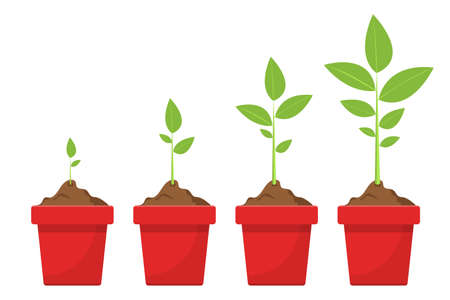Origins of Crop Rotation in the UK
The roots of crop rotation in the United Kingdom can be traced back to the medieval period, where communal open field systems dominated the rural landscape. In these early days, British farmers worked collectively to manage large strips of land, often rotating crops and leaving some fields fallow to maintain soil fertility. This approach was not only practical but essential, as it helped to minimise the risk of disease and soil exhaustion at a time when agricultural knowledge was largely based on experience and observation. The real turning point for crop rotation practices came during the Agricultural Revolution in the 18th century. Innovations such as the four-field system, popularised by Viscount Townshend, revolutionised British agriculture by introducing a more systematic approach to planting wheat, turnips, barley, and clover in rotation. This method significantly improved yields and land productivity, marking a major departure from older traditions. The legacy of these historical developments is still evident today in UK allotments, where crop rotation remains a core principle for sustainable and productive gardening.
2. The Introduction and Evolution of Allotments
The story of allotments in the United Kingdom is deeply intertwined with social, economic, and agricultural developments over the past two centuries. Allotments—small plots of land rented to individuals for growing food—emerged as a response to changing societal needs, particularly during periods of hardship and transformation. Their formation can be traced back to the late 18th and early 19th centuries, coinciding with the Industrial Revolution. As people migrated from rural areas to urban centres seeking work in factories, access to land for food production diminished. This led to increased food insecurity among the working classes.
In response, enlightened landowners and reformers began providing small parcels of land near towns for workers to grow their own produce. The Allotment Act of 1831 was an early legal recognition of this need. Allotments became more widespread through subsequent legislative measures, especially as urbanisation intensified.
The role of allotments shifted dramatically during the two World Wars. Faced with severe food shortages due to disrupted supply chains, the government promoted the “Dig for Victory” campaign in World War II, encouraging citizens to cultivate every available patch of land—including parks and private gardens—in order to supplement rationed food supplies. Crop rotation quickly became an essential practice on these plots, helping maintain soil fertility and reduce pests without relying on chemical inputs that were scarce or expensive.
Key Phases in UK Allotment History
| Period | Societal Context | Allotment Development |
|---|---|---|
| Industrial Revolution (late 1700s–1800s) | Urban migration; loss of rural subsistence | Initial formation; informal plots provided by landowners |
| Late 19th Century | Continued urban growth; increasing poverty awareness | Formalisation through legislation (e.g., Allotment Acts) |
| World War I & II | Food shortages; national emergencies | Mass expansion; “Dig for Victory”; crop rotation popularised |
The Integral Role of Crop Rotation
Crop rotation’s adoption on allotments was not only practical but also essential for sustainability. Traditional knowledge combined with necessity led plot holders to rotate crops annually—typically moving potatoes, brassicas, legumes, and root vegetables around different sections—to prevent soil depletion and control disease spread. This approach mirrored practices seen on larger farms but was adapted for smaller scales and community settings.
Cultural Legacy
The evolution of allotments reflects broader shifts in British society—from agrarian roots through industrialisation and into modern times. Crop rotation remains at the heart of this tradition, symbolising self-reliance, ingenuity, and communal resilience that are celebrated aspects of UK allotment culture today.

3. Traditional Crop Rotation Methods on Allotments
Within the network of UK allotments, crop rotation has long been a cornerstone of effective and sustainable gardening. The most prevalent systems are the three-year and four-year rotations, each meticulously designed to balance soil health, manage pests, and optimise yields. The classic three-year system typically groups crops into legumes (such as beans and peas), brassicas (like cabbages and broccoli), and roots (including carrots and potatoes). Each group is grown in a different bed each year, rotating through the plots so that no crop occupies the same space consecutively. The logic behind this tradition is grounded in both practical observation and generations of shared wisdom: legumes enrich the soil with nitrogen, brassicas benefit from this fertility boost, while root crops help break up the soil structure.
Many British allotment holders favour the four-year rotation, which introduces a fourth category—often onions or other alliums—to further refine nutrient management and disease prevention. This method divides crops into legumes, brassicas, roots, and onions/leeks/garlic. By extending the cycle, gardeners reduce the risk of soil-borne diseases such as clubroot or onion white rot becoming established, while also ensuring that each crop’s specific nutritional needs are met without depleting the soil.
The persistence of these rotation schemes is not merely about tradition for tradition’s sake. They reflect a deep-rooted respect for the land and a collective memory of past hardships—such as wartime shortages—when resourcefulness was key to survival. These methods have become embedded in allotment culture across Britain, passed down through families and local societies as both practical advice and communal heritage.
4. Cultural Importance and Community Aspects
Crop rotation is far more than just an agricultural practice in UK allotments; it is deeply woven into the cultural fabric of local communities. Allotment gardening, with its roots in British social history, thrives on shared knowledge and collective effort. Crop rotation fosters a spirit of cooperation among plot holders, as gardeners exchange advice on best practices, crop choices, and seasonal rotations. This collaborative approach strengthens neighbourhood bonds and ensures that traditional horticultural wisdom is passed down through generations.
Community Building Through Shared Practice
The regular discussions about which crops to plant where—and when—encourage communication and collaboration. Many allotment societies hold meetings or informal gatherings where crop rotation plans are debated and agreed upon, reinforcing a sense of ownership and belonging. New members often learn from seasoned gardeners, creating a supportive learning environment that celebrates communal achievement over individual competition.
Food Security and Environmental Awareness
Crop rotation plays a pivotal role in enhancing food security within UK communities. By diversifying crops and reducing soil-borne diseases, plot holders can dependably produce healthy harvests year after year. This resilience is particularly valued in urban areas where access to fresh produce may be limited. Furthermore, the environmental benefits—such as improved soil health and reduced reliance on chemical fertilisers—align with the growing emphasis on sustainability across the UK.
Benefits of Crop Rotation for Allotment Communities
| Aspect | Impact |
|---|---|
| Community Engagement | Encourages sharing of knowledge, seeds, and resources |
| Food Security | Ensures reliable yields and access to diverse produce |
| Environmental Stewardship | Promotes organic methods and biodiversity |
Cultural Traditions Endure
The tradition of crop rotation endures as a living heritage within UK allotments. It symbolises not only a pragmatic approach to gardening but also a commitment to stewardship—of both land and community. Through these shared rituals, allotment holders continue to reinforce values of cooperation, self-reliance, and ecological responsibility that are distinctly British in character.
5. Sustainability and Modern Practices
Crop rotation remains a cornerstone of sustainable gardening on UK allotments, reflecting an enduring commitment to environmental stewardship and community resilience. As organic gardening practices gain traction across Britain, allotment holders increasingly recognise the benefits of crop rotation for reducing reliance on chemical fertilisers and pesticides. By carefully planning which crops follow one another, gardeners naturally disrupt pest cycles and enhance soil health, aligning with organic principles valued by local communities.
The urgency of climate change has further highlighted the importance of resilient and adaptable food production methods. Allotment growers have responded by experimenting with diverse crop rotations that account for unpredictable weather patterns and shifting growing seasons. For example, introducing nitrogen-fixing legumes ahead of demanding brassicas not only replenishes soil fertility but also supports greater yields in less stable climates. This pragmatic approach ensures that UK allotments continue to provide reliable harvests even as environmental conditions evolve.
Moreover, crop rotation contributes to the broader goal of sustainable food systems within urban and rural settings alike. Allotment societies often share advice and resources, fostering a culture of experimentation and mutual learning around rotation schedules best suited to local soils and microclimates. These collective efforts reflect a deep-rooted sense of place and shared responsibility that has characterised British allotment culture since its inception.
In summary, the adaptation of traditional crop rotation to modern challenges is both a practical necessity and a cultural statement within UK allotments. It underscores a commitment not only to personal wellbeing but also to ecological integrity and community cohesion—values that remain central to British gardening identity in the face of contemporary environmental pressures.


